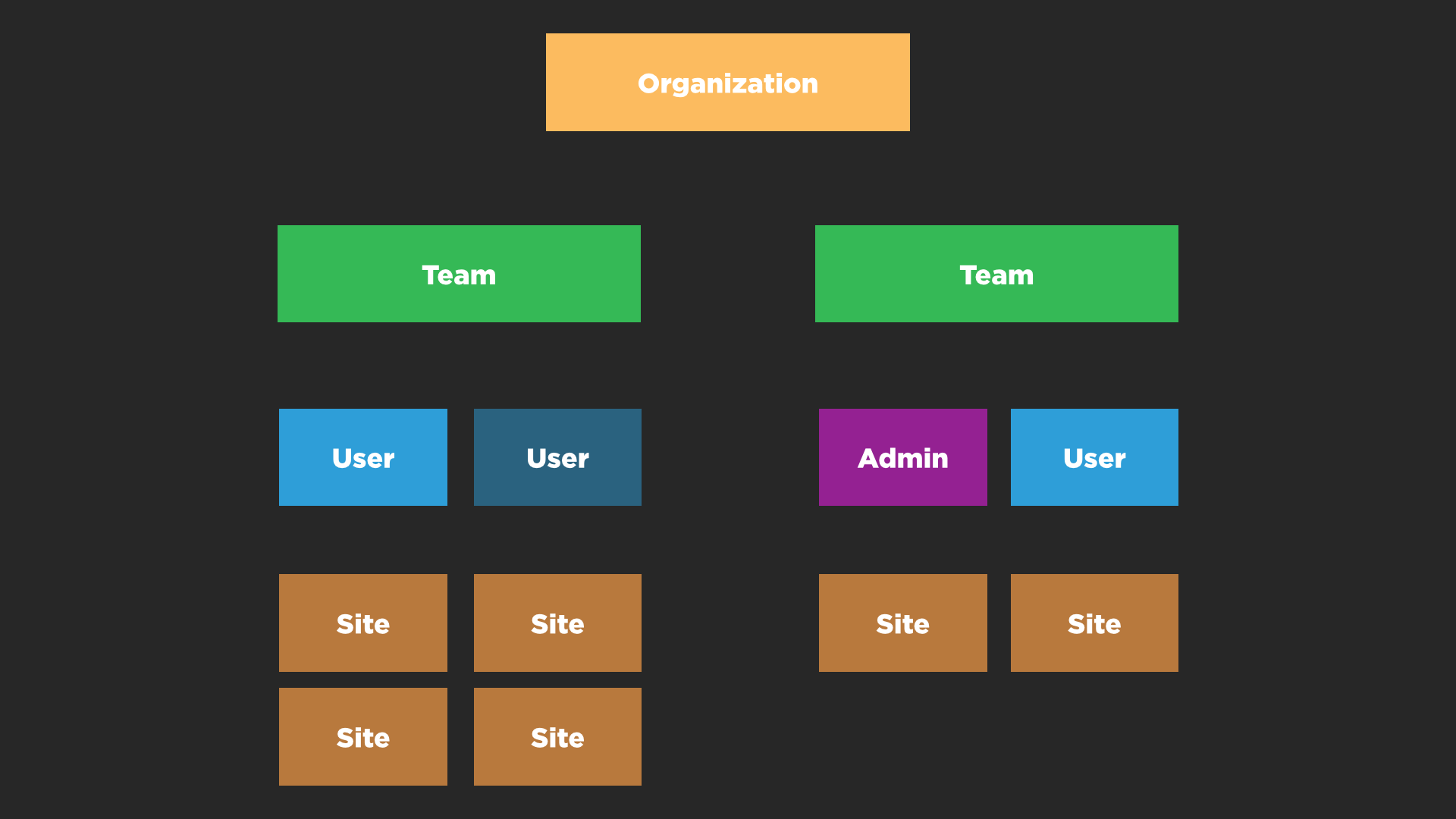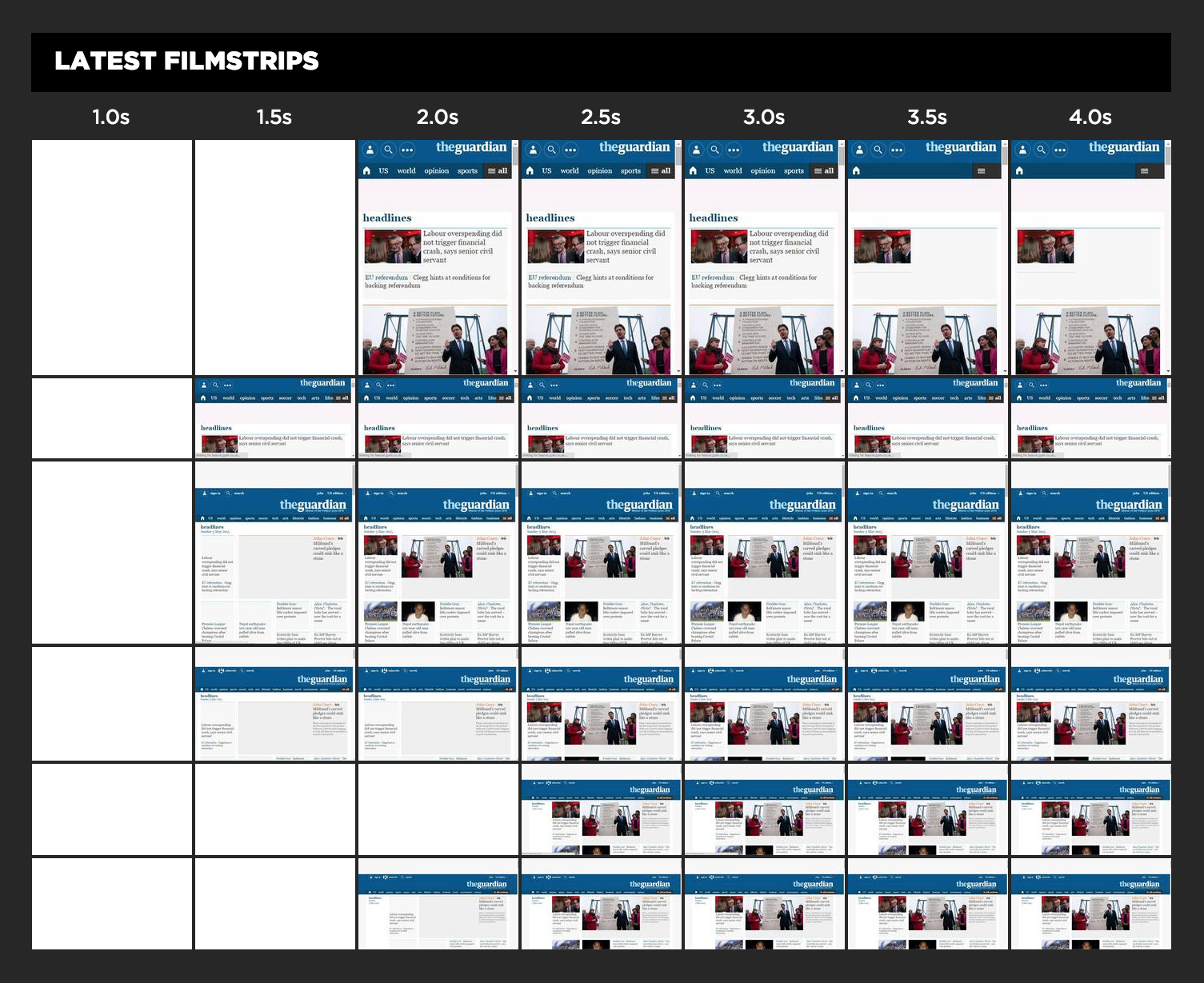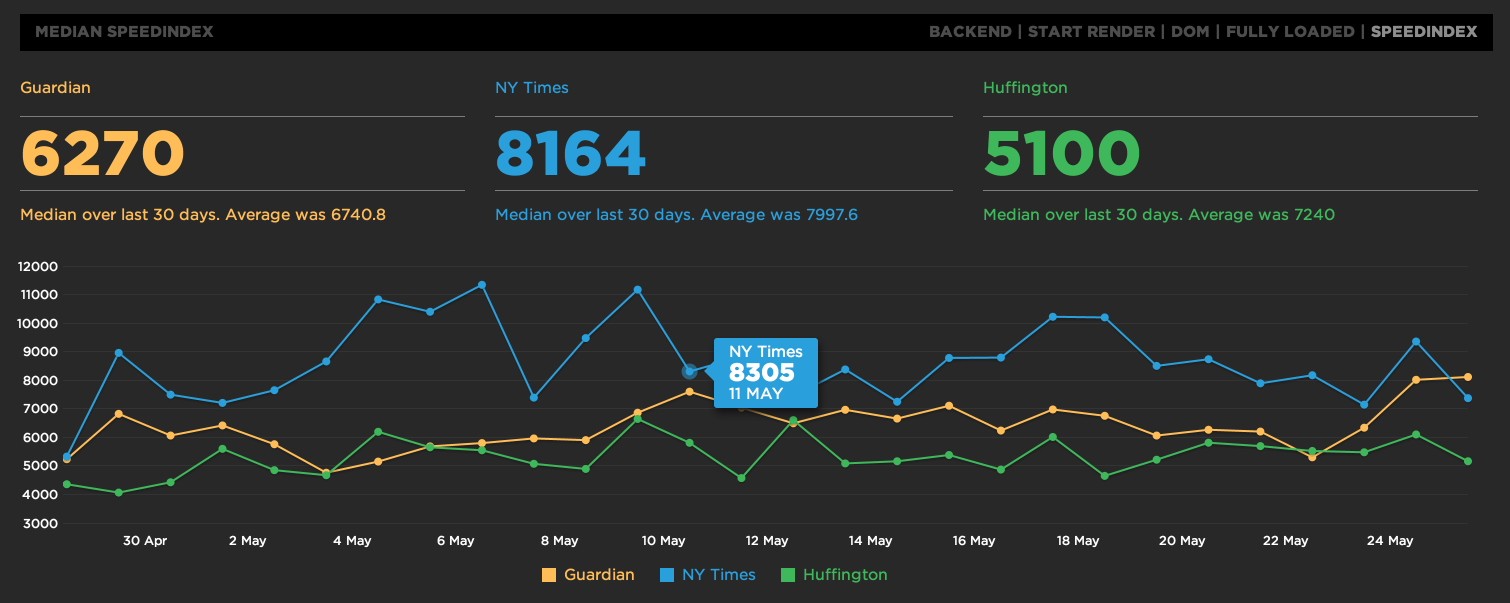Multiple teams and multiple users
This week we added support for organizations with multiple teams and multiple users.

One of the toughest challenges was simply working out what to call the different layers within the SpeedCurve app. Developers can spend years buried inside a data model but at the end of the day the UI has to be intuitive and easy to use! I hope we’ve done that and if not we’d love your feedback.
UX Focus for Waterfalls and Third Parties
At SpeedCurve, we want to help designers and developers have better insight into the user experience they're delivering. For websites, this means understanding when the critical parts of the page render and what might be blocking rendering.
We've redesigned our waterfall chart to really highlight the relationship between the assets on the page and their affect on the user experience. Now as you move you mouse over the waterfall chart we show you exactly what a user is seeing at that millsecond while the page loads. This makes it much easier to identify any Javascript or CSS that might be blocking the page from rendering. I recently used this new combined waterfall and filmstrip view to identify a common issue with hero images being delayed.
The language and metrics of UX evolve at Velocity 2015
Originally published on the O'Reilly Radar Blog
I’ve attended four O’Reilly Velocity conferences over the last year, and I was struck by a notable shift in the conversations at Velocity in Santa Clara, Calif. Many speakers and attendees have started to change their language and describe the experience of their websites and apps from the user’s perspective.
The balance has shifted from just talking about how fast or reliable a particular system is to the overall experience a user has when they interact with and experience a product. Many people are now looking at themselves from the outside in and developing more empathy for their users. The words “user” and “user experience” were mentioned again and again by speakers.
Here are recent talks from Velocity and other events that highlight this shift to UX concerns.
Responsive Design Dashboard
The dramatic growth of mobile traffic has created an urgency for websites to adapt to different screen sizes. Responsive design is the preferred technique for making web content adapt to the device on which it's viewed. This approach ensures that the appropriate content is rendered in an appropriate way on phones, tables, laptops, and any other screen being used.
A corollary to responsive design is the need for performance. Delivering content that's customized for a particular device isn't enough if its delivery is slow and frustrating. Indeed, last week Google announced that websites need to deliver their design appropriately and quickly on mobile devices or they will be demoted in Google's search results.
How can you know if your website matches these standards for adaptive content and speed? SpeedCurve's Responsive Design Dashboard answers both questions in one view.

Mark+Steve, Performance+Design
I'm excited to announce that I've joined SpeedCurve!
When SpeedCurve was just a twinkle in Mark's eye, he contacted me about the concept and I encouraged him that a commercial version of WebPageTest was needed. When I saw the early versions of SpeedCurve, I was blown away. Mark presents traditional performance data in a way that is more compelling, revealing his strong design background.
Mark has pioneered this new territory where performance and design overlap. It's exciting to say "overlap". Many times there's little interaction between designers and performance engineers. When there is interaction, it can feel adversarial with no one wanting to give any ground. And yet, designers and performance engineers are after the same thing: creating a great user experience!
Design and performance are connected, like the yin and yang. They aren't opposing forces, but instead complement each other. Users want an experience that is rich and fast. The trick is figuring out how to do that. That's where SpeedCurve comes in.
Velocity: Better performance through better design
Improve web performance by improving your design process… it needs to be iterative, mindful, principled and visual.
At my third Velocity conference for the year (this time in beautiful Barcelona) my keynote presentation explored the ways in which a thoughtfully developed design process can lead to higher functioning teams and better web performance.
Velocity: A better waterfall chart
The way we visualize performance data can have an impact on how we interpret and communicate performance issues within our teams.
In this talk from Velocity New York I explored the importance of data visualization and presented some of my own explorations into re-imagining the classic waterfall chart which is the mainstay of front-end performance analysis.
Skip to 15:30 if you just want to see the data visualization experiments.
One of these experiments was also turned into a performance heatmap bookmarklet.
Velocity: Responsive in the wild
I was lucky enough to give a Lighting Demo at Velocity Conference in Santa Clara. The focus was on research I conducted into 250 responsive websites and how well optimized for performance they were.
Faster EC2 testing agents
As of the 1st of June SpeedCurve has switched to using faster testing agents at Amazon EC2 data centers. As web pages become more Javascript and resource heavy I've noticed more and more pages max out the CPU while performance testing.
Speed Index now available
Speed Index is now available on SpeedCurve. Choose "SpeedIndex" from the top right of the main graphs.


